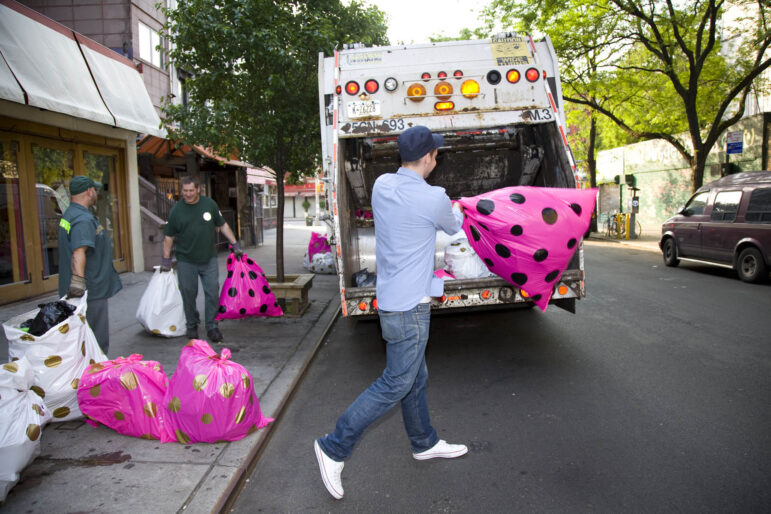Photo by: Adi Talwar
Most Parks Department fields are still grass. The department says it takes $14,000 to maintain a grass field each year, but some sports leagues say they do it for far less. Here, ball is played on natural surface at Van Cortlandt Park.
Instead of allocating the necessary expense dollars for day-to-day operations in city parks, New York has decided to borrow capital funds to rebuild. Parks advocate Geoffrey Croft calls this “the constant recapitalization of parks,” using a phrase he picked up from Central Park Conservancy founder Betsy Barlow Rogers. “It’s a vicious cycle.”
While the city avoids paying benefits to workers, future generations are saddled with debt. Under the Bloomberg administration, the annual debt service on Parks Department capital projects has nearly tripled to $180 million a year. New Yorkers will be paying on today’s turf fields long after the fields are gone.
There is an alternative, though. Three state-of-the-art grass baseball fields sit in Juniper Valley Park, located in the solidly middle-class neighborhood of Middle Village, Queens. The 55-acre park was built on peat bog known as Juniper Swamp, which had once been bought for a real estate scam orchestrated by Arnold “The Brain” Rothstein, the gambler best remembered for setting up the 1919 Black Sox scandal.
The three clay-and-grass baseball fields are maintained not by the city but by two volunteers from the Juniper Park Civic Association. “We have the best fields in New York,” boasts the association’s president, Robert Holden. “You should see the expressions on the kids who come here to play. They can’t believe they’re in Queens.”
The park also has a synthetic-turf athletic field. “It’s very hot, and they don’t maintain it,” Holden complains. “You smell it on hot days. The odor is terrible. We’ve already asked Parks to remove it.” When that turf field was installed in 2003 for $1.4 million, the Parks Department issued a press release claiming, “The newest synthetics are giving old grass fields a run for their money.” Holden is deeply skeptical. “Our grass field will outlast the artificial turf for sure.”
Parks Commissioner Adrian Benepe may now say that a grass field costs $14,000 a year to maintain, including staffing and equipment, but he once told The New York Times the annual upkeep for grass could add up to $35,000. At other times, the agency has put the maintenance tab for grass at $29,000. “We do it for a lot less,” says Holden, who estimates his yearly cost for organically maintaining each of his well-groomed fields is just $2,600.
“We don’t get paid, of course,” he says, “but it can be done, if Parks would hire people to maintain the fields. Baseball should be played on grass.”









